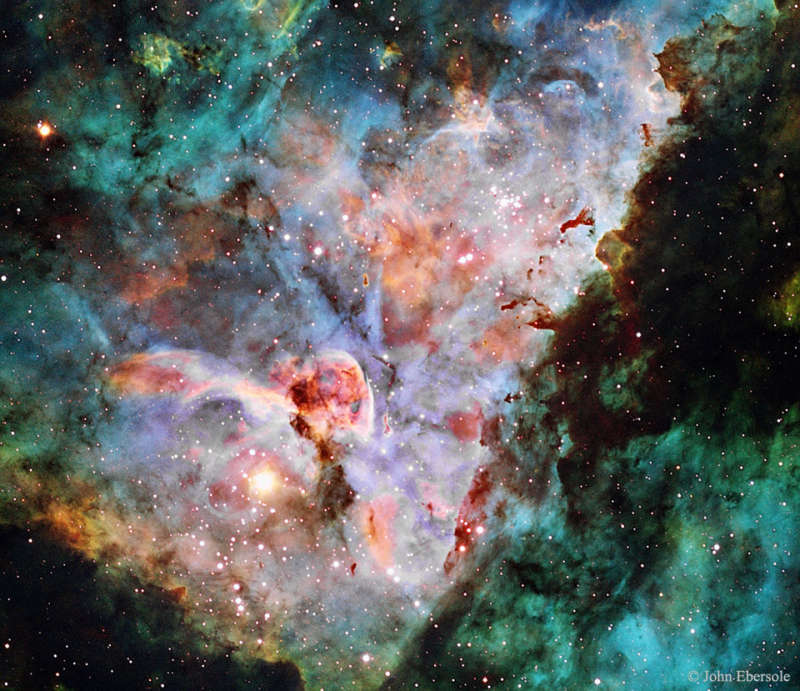Credit & Copyright: John Ebersole
Explanation:
What forms lurk in the mists of the Carina Nebula?
The dark ominous figures are actually
molecular clouds,
knots of molecular gas and
dust so thick they have become
opaque.
In comparison, however,
these clouds are typically
much less dense than
Earth's atmosphere.
Featured here is a detailed image of the core of the
Carina Nebula, a part where both dark and colorful
clouds of gas and dust are particularly prominent.
The image was captured in mid-2016 from
Siding Spring Observatory in
Australia.
Although the nebula is predominantly composed of
hydrogen gas -- here colored green,
the image was assigned colors so that light emitted by trace amounts of
sulfur and
oxygen
appear red and blue, respectively.
The entire
Carina Nebula,
cataloged as NGC 3372, spans over 300
light years
and lies about 7,500 light-years away in the
constellation of Carina.
Eta Carinae,
the most energetic star in the nebula,
was one of the brightest stars in the sky in the 1830s, but then
faded dramatically.
1999 2000 2001 2002 2003 2004 2005 2006 2007 2008 2009 2010 2011 2012 2013 2014 2015 2016 2017 2018 2019 2020 2021 2022 2023 2024 2025 |
Yanvar' Fevral' Mart Aprel' Mai Iyun' Iyul' Avgust Sentyabr' Oktyabr' Noyabr' Dekabr' |
NASA Web Site Statements, Warnings, and Disclaimers
NASA Official: Jay Norris. Specific rights apply.
A service of: LHEA at NASA / GSFC
& Michigan Tech. U.
|
Publikacii s klyuchevymi slovami:
carina nebula - tumannost' Kilya
Publikacii so slovami: carina nebula - tumannost' Kilya | |
Sm. takzhe:
Vse publikacii na tu zhe temu >> | |
